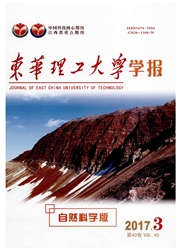

 中文摘要:
中文摘要:
朱溪铜钨多金属矿床位于赣东北深大断裂北西侧。矿体主要产于燕山期侵入岩与碳酸盐岩接触带的矽卡岩或矽卡岩化大理岩中,代表性矽卡岩矿物有石榴子石、透辉石、透闪石、硅灰石、蛇纹石、金云母、符山石、绿泥石等。根据矿物共生组合及交代关系推断流体经历了5个阶段,分别为矽卡岩阶段、退化蚀变阶段、石英硫化物阶段、石英碳酸盐阶段和表生氧化阶段。特征矿物的电子探针分析结果表明,石榴子石主要为钙铝榴石—钙铁榴石;辉石以透辉石—钙铁辉石系列为主;角闪石属钙角闪石系列;绿泥石主要是密绿泥石和斜绿泥石。推测岩浆侵入后,在矽卡岩阶段为中酸性弱氧化条件,在退化蚀变阶段氧逸度和pH值升高,氧化物析出,随着氧逸度的又一次降低,金属硫化物沉淀。最后,通过其矿物成分特征推测该矿床金属矿化的种类。
 英文摘要:
英文摘要:
Abstact:The Zhuxi Cu-W polymetallic ore deposit is located in the northwest of Gandongbei faulted zone. The orebodies mainly occur in the skarn and skarnized marble at the contact zone between Yanshan intrusive rock and carbonate. Typical skarn minerals consist mainly of garnet, diopside, tremolite, wollastonite, serpentine, phlogopite, vesuvianite and chlorite. According to the associa-tion and metasomatism relationship of the minerals, the authors infer that the ore-forming fluid might have experienced five evolu-tionary stages, i.e., skarn stage, degenerate alteration stage, quartz sulfide stage, quartz carbonate stage, and supergene oxide stage. Elec-tron microprobe analyses show that the garnet is mainly composed of grossularite-andradite, the pyroxenes mainly belong to diop-side-andradite series, the amphiboles show characteristics of calciferous amphibole, and the chlorites are mainly pycnochlorite and clinochlorite. It is also inferred that after the intrusion ore-forming the fluid was under the medium-acid to acid and weak oxidizing conditions at the skarn stage. At the degeneration alteration stage, the scheelite was separated out after the rise of the oxygen fugacity and the pH. The metal sulfides precipitated along with the drop of the oxygen fugacity. The class of the metal mineralization was also inferred according to its mineral compositions.
 同期刊论文项目
同期刊论文项目
 同项目期刊论文
同项目期刊论文
 期刊信息
期刊信息
